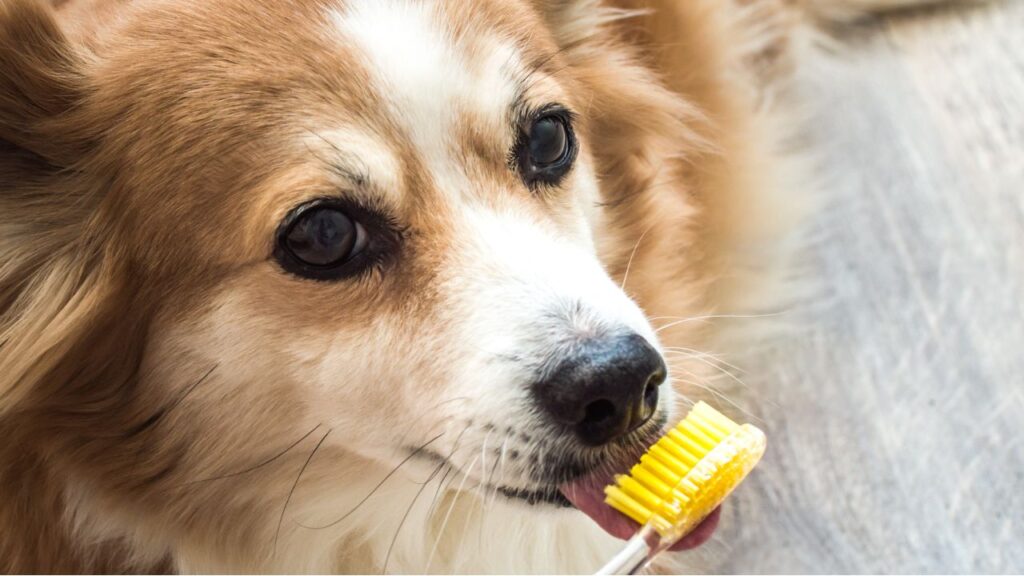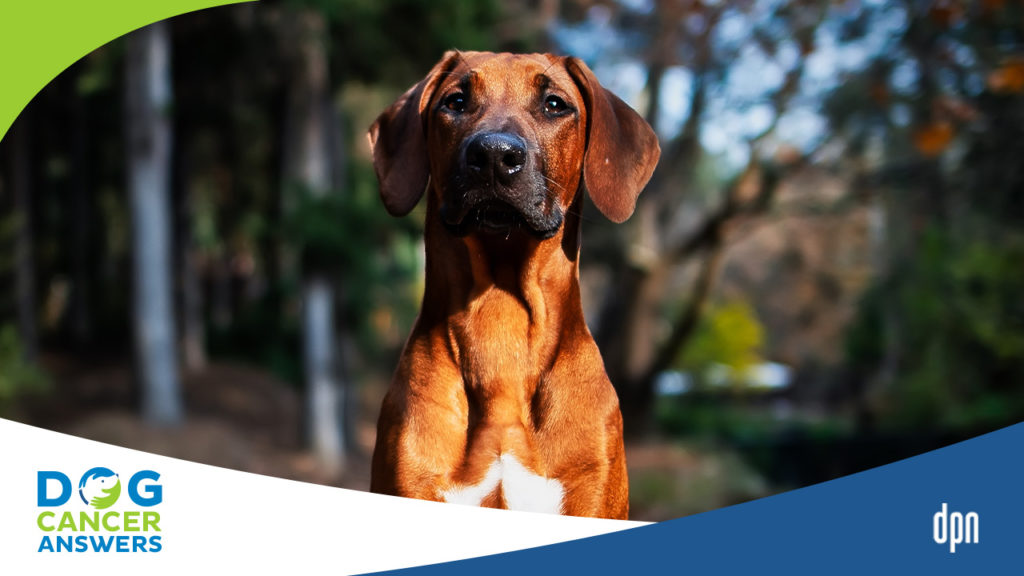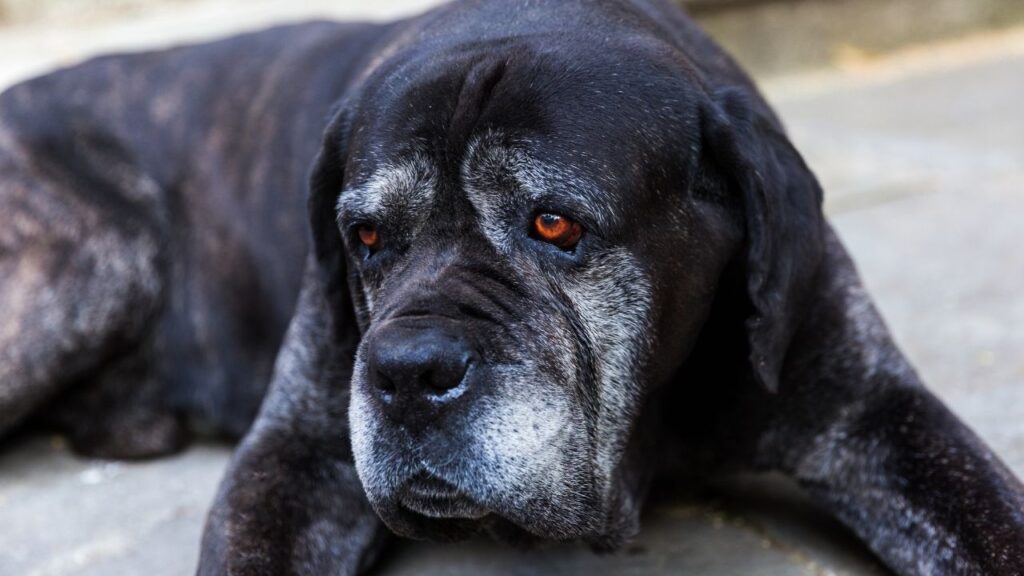Epulis in Dogs (Odontogenic Tumors)
An epulis tumor in your dog’s mouth may look scary, but many of them are completely treatable. Also called odontogenic tumors, these oral tumors in dogs arise from the teeth and associated structures. With early detection, confirmation of tumor type, and appropriate treatment, many dogs with an epulis (or many!) have excellent outcomes.
Key Takeaways
- Dogs with an epulis can often live a normal lifespan, if their tumors are caught early and treated appropriately.
- Depending on the size, location, if it is invading nearby tissue, and if it becomes infected, an epulis may or may not be painful in dogs.
- By the time they are discovered and diagnosed, they are big enough to cause discomfort for the dog.
- Surgery is the most common and most effective treatment for an epulis in dogs. Sometimes radiation (and occasionally chemotherapy) will be recommended instead of or in addition to surgery.
- There is no known cause for epulis in dogs.
- Though surgery is often the most effective, some dogs are successfully treated with radiation.
- The cost of surgically removing an epulis in dogs depends on the tumor’s size, location, and invasiveness.
- Though most epulides require surgery, there have been reports of odontogenic masses falling off after being bitten and losing their blood supply. This is very rare, and most of them grow back, so treatment of the epulis is definitely still recommended.
- Epulis in dogs do not metastasize (spread to other parts of the body), but some types do invade nearby tissue, usually jawbone.
Epulis in Dogs, Also Known as Odontogenic Tumors
The term “epulis” refers to any growth (cancerous or non-cancerous) arising from the gums and associated structures in the mouth. The plural of epulis is epulides.
Though epulis is still a commonly used term, many veterinarians prefer to use the term “odontogenic tumor,” meaning “arising from tissues that give origin to the teeth.”
The terms epulis and odontogenic tumor are often used interchangeably.
If left untreated, odontogenic growths can be painful. Even non-cancerous epulis in a dog’s mouth may lead to infections, difficulty eating, and deformities of the mouth and face.
We will discuss the primary types of odontogenic tumors, but remember that your veterinary team may use these terms slightly differently, and that’s okay. Just ask them which one they mean if you need clarification.
Fibromatous Epulis
These fibrous masses arise from the periodontal ligament — the connective tissue between the jawbone and the tooth roots. They usually occur at the margins of the gums and teeth and are more often near the upper front teeth.1
Peripheral Odontogenic Fibroma (Ossifying Epulis)
Some people use “peripheral odontogenic fibroma” (POF) to include fibromatous epulides. These masses are made of fibrous tissue but also contain osteoblasts, the cells that form bone tissue.
Peripheral odontogenic fibromas are often pink, smooth, and non-ulcerated masses near the upper front teeth. They can be single masses or occur in groups and may have a long stalk.1
Acanthomatous Ameloblastoma (Acanthomatous Epulis)
These growths are also referred to as “canine acanthomatous ameloblastoma” (otherwise known as CAA). This tumor is often rough, ulcerated, and has a cauliflower-like appearance. It mostly occurs near the upper or lower front teeth and the larger canine teeth.
While canine acanthomatous ameloblastoma is classified as benign because it does not metastasize (spread to other parts of the body) it is very aggressive locally. It can invade and destroy the nearby jawbone. It is also very likely to grow back if the mass is not completely removed during surgery.1,2
Stats and Facts About Epulis in Dogs
- Many types of masses can occur in a dog’s mouth. According to one German study, about 18 % of oral tumors can be classified as odontogenic or epulis.3
- Of the tumors classified as odontogenic, about 16% are classified as peripheral odontogenic fibromas. They most commonly occur near the upper front teeth.1
- About 45% of odontogenic tumors are canine acanthomatous ameloblastomas (CAAs), making them the most reported type of epulis in dogs. They most commonly occur near the lower front teeth.4,1
- Canine acanthomatous ameloblastomas are locally aggressive and can have high recurrence rates. In a 1999 study of canine acanthomatous ameloblastomas that were incompletely removed (meaning a few cancer cells were left behind), 91% of them grew back, and it took an average of 32 days.5
Causes of Epulis in Dogs
There is no known cause for epulis in dogs.
Risk Factors for Epulides
Though we do not know what causes epulis in dogs, some risk factors have been identified for the most common subtype, canine acanthomatous ameloblastomas.
Breeds most often affected by canine acanthomatous ameloblastomas include:1
- Shetland Sheepdog
- Golden Retriever
- Cocker Spaniel
- Akita
The average age for dogs diagnosed with canine acanthomatous ameloblastoma is 7-10. There does not appear to be a sex predisposition.2,4
Symptoms of Epulis in Dogs
If you notice an epulis in your dog’s mouth at home, it will likely resemble a small pink bump growing between your dog’s teeth. These masses can be smooth or slightly roughened. They can appear with or without a stalk. These masses are usually the same color as the surrounding gum tissue.
Many dogs do not show symptoms of an odontogenic tumor until the mass has grown large enough to make chewing or swallowing difficult. Other symptoms that you may notice include:
- Bad breath
- Excessive drooling
- Teeth chattering
- Bleeding from the mouth
- Loose teeth (if the mass has been pushing on them)
- Lack of appetite
- Dropping food
- Pawing at the face
- Dislike of being touched on the head
Diagnosing Epulis in Dogs
Many masses are not found until an annual wellness exam or a sick visit to your veterinarian.
If you see a mass in your dog’s mouth at home, let your veterinarian know right away so they can take a look.
Your veterinarian will examine your dog and record the mass’s size, position, color, firmness, and any signs of infection.
Additional tests that your veterinarian may recommend if he or she suspects an epulis include:
- A sedated or anesthetized oral exam to get a better look at the mass and surrounding teeth
- Full-mouth dental X-rays to assess the associated teeth and jaw bones
- A fine needle aspirate or biopsy
- Bloodwork to assess general health, especially before anesthesia or sedation
Fine Needle Aspirate
Your veterinarian may use a needle to take a sample of cells from the mass and look at them under the microscope to determine what kind of mass it is. This is called a fine needle aspirate, or FNA.
This procedure is very quick and doesn’t hurt, and most tumors found elsewhere in the body can be aspirated while your dog is awake. But dogs can be protective of their mouths, so your dog may need to be sedated to get an FNA.
Although an FNA is often quicker and sometimes easier to obtain, some odontogenic tumors are easier to identify with a biopsy.6
Biopsy
Depending on what your veterinarian finds during their exam, they may take an incisional or excisional biopsy.
An incisional biopsy is when only a portion of the tumor is removed. An excisional biopsy is when the entire tumor is removed.
Depending on many factors, either of these is usually done with your dog under anesthesia — or at least sedation and a local anesthetic.
The tumor section will be sent off to a veterinary pathologist at an outside laboratory. This veterinary specialist will interpret the types of cells and tissues present and report their diagnosis or list of possible diagnoses within a few days. You and your veterinarian can determine the next steps based on these results.
Dental Imaging (X-rays, MRI or CT)
Dental X-rays focus closely on the mouth and teeth, showing the small area of the epulis tumor very well. However, they are not very helpful for staging (determining how much of the body is affected by cancer) and surgical planning (deciding how much surrounding tissue should be removed with the mass).
More advanced imaging (such as CT or MRI) may be recommended before surgery to be as accurate as possible.
Prognosis and Staging Epulis in Dogs
Staging determines how much the mass is invading nearby tissue and if it has spread elsewhere in the body. Based on the tests used to diagnose (above), your veterinarian will probably be ready to give a prognosis and treatment plan because these tumors do not tend to metastasize.
Most dogs with odontogenic tumors have an excellent prognosis (estimated outcome).
If the tumor can be operated on, surgical removal will cure most dogs.2 The median survival time for canine acanthomatous ameloblastomas treated by surgical removal alone is over two years.7,8
The prognosis is worse for tumors that cannot be surgically removed, or if the tumor has spread to other tissues, or if the tumor has invaded nearby tissue.
Canine acanthomatous ameloblastomas can be troublesome because, although they do not metastasize, they tend to involve bone, sometimes making them difficult or impossible to remove surgically.
Epulis Treatments
Odontogenic tumors are most treated with surgery and sometimes radiation and/or chemotherapy. While surgical removal can be curative for odontogenic tumors, cancer treatment in dogs is not usually about getting a “cure.” Instead, the focus is on improving and maintaining quality of life while hopefully extending the dog’s life beyond what would happen if the cancer wasn’t treated.
Surgery for Epulis Tumors Is the Standard Treatment
Surgery is the standard treatment option for peripheral odontogenic fibroma and canine acanthomatous ameloblastoma. Depending upon the specifics of what your dog needs, your veterinarian may be comfortable performing the surgery herself, or she may refer you to a veterinary dentist or veterinary oncologist.
- Peripheral odontogenic fibroma can be removed with traditional surgery or using a laser. The entire periodontal ligament, which holds the tooth in place, should also be removed to keep the epulis from growing back.
- Because canine acanthomatous ameloblastomas often invade neighboring bone, surgery for this type of epulis often involves removal of the involved teeth and part of the jawbone.
- The term for surgical removal of part of the upper jaw is a maxillectomy, and the term for removal of part of the lower jaw is a mandibulectomy.
- With margins (or borders around the tumor) of at least one centimeter, recurrence of canine acanthomatous ameloblastoma is unlikely.
Though it sounds scary, dogs often recover very well from removing teeth and part of the jawbone. Possible complications of maxillectomy and mandibulectomy include:
- Nosebleeds
- Nasal discharge
- Infections
- Eye discharge
- Facial deformities
- Increased drooling
- Dropping food
- Difficulty chewing.
Your veterinarian will likely recommend feeding soft food until the tissues heal completely. They may also want to repeat dental X-rays around six months after surgery to confirm no tumor re-growth.
The cost of surgery to remove an epulis will vary depending on the tumor’s size and if it is attached to underlying tissues or bone. Your veterinarian or veterinary surgeon should be able to give you an itemized estimate of the cost before the surgery. Be sure to ask them to clarify anything you don’t understand.
Radiation
Radiation is using high-energy beams (usually X-rays) to treat a tumor. In dogs with odontogenic tumors, radiation can be used in several ways:
- before surgery to decrease the size of a tumor
- after surgery for tumors that are incompletely removed
- to decrease the size of tumors when surgery is not recommended
Radiation is most often used to treat canine acanthomatous ameloblastoma because it tends to be more difficult to remove surgically. Using radiation therapy for canine acanthomatous ameloblastoma, 80% of dogs remain tumor-free for about three years, and 8% to 18% of these tumors will return.10
There are possible side effects of radiation. About 5% of dogs will develop necrosis (or death of healthy tissue) at the treatment site. About 3.5% will develop a different type of tumor at the site of treatment.10 These are late side effects that may occur months or years later.
Specialist Jenny Fisher tells us all about radiation for dogs with cancer in this special episode of DOG CANCER ANSWERS.
Chemotherapy
Chemotherapy is not commonly used to treat epulis in dogs because these tumors do not tend to metastasize, but some studies have been done.
For example, one study of dogs with inoperable canine acanthomatous ameloblastoma had their tumors injected with a chemotherapeutic drug called bleomycin for four months. Six out of seven dogs in the study had no recurrence of canine acanthomatous ameloblastoma, and survival time was two years.9 Though promising, this treatment may cause wounds at the injection site.9
Sometimes, oncologists have successfully used chemotherapy following surgery with dirty margins (some cancer cells were left behind after surgery), but it is not usually used as the primary treatment for epulis in dogs.
Immunotherapy
No immunotherapies are currently used to treat epulis in dogs.
Vaccine
Currently, no vaccines are used to treat epulis in dogs.
Diet
There are no specific dietary recommendations for dogs with epulides. Your veterinarian may recommend feeding soft foods after surgery or if your dog has trouble eating because of the tumor.
Supplements
No supplements are recommended explicitly for dogs with odontogenic tumors, but some general cancer supplements may be beneficial.
In most cases it is better to choose a few supplements that target your dog’s primary needs, rather than throwing a bunch of supplements at her. Always consult with your veterinarian before starting any supplement to ensure it is appropriate for your dog.
Integrative Therapies
Acupuncture may be beneficial for some oral tumors,11 or for managing side effects from treatment.
Cryosurgery may benefit odontogenic tumors and can be used instead of traditional surgery.12
What the End of Life Looks Like for Dogs with Epulis (Odontogenic Tumors)
Unlike other oral tumors, with early detection and treatment, most odontogenic tumors should not interfere with a normal life expectancy in dogs.
Odontogenic tumors do not metastasize to other parts of the body, though canine acanthomatous ameloblastoma may be locally aggressive and injure bone and gum tissues in the mouth. But even in these more difficult cases, surgery and radiation therapies can still be curative.
If left untreated or in cases where treatment is not curative, dogs can experience many uncomfortable symptoms as the mass grows unchecked, including:
- facial swelling
- bleeding from the mouth
- difficulty eating
- increased drooling
- pain in the mouth
In addition, difficulty eating may cause weight loss. If an infection starts in the mouth, it can be very painful and cause even more complications.
Even so, most dogs do not die directly due to odontogenic tumors. If life quality suffers too much, however, most dog lovers choose their dog to be humanely euthanized.
Prevention Strategies
No preventive therapies are available for odontogenic tumors at this time. Good oral health can help prevent any mouth problems, including brushing your dog’s teeth. Early diagnosis and treatment offer the greatest chance for a cure while preserving as much healthy tissue as possible.
- Fiani N, Verstraete FJ, Kass PH, Cox DP. Clinicopathologic characterization of odontogenic tumors and focal fibrous hyperplasia in dogs: 152 cases (1995-2005). J Am Vet Med Assoc. 2011;238(4):495-500. doi:10.2460/javma.238.4.495
- Goldschmidt SL, Bell CM, Hetzel S, Soukup J. Clinical Characterization of Canine Acanthomatous Ameloblastoma (CAA) in 263 dogs and the Influence of Postsurgical Histopathological Margin on Local Recurrence. J Vet Dent. 2017;34(4):241-247. doi:10.1177/0898756417734312
- Boehm B, Breuer W, Hermanns W. Odontogene Tumoren bei Hund und Katze [Odontogenic tumours in the dog and cat]. Tierarztl Prax Ausg K Kleintiere Heimtiere. 2011;39(5):305-312.
- Gardner DG. Epulides in the dog: a review. J Oral Pathol Med. 1996;25(1):32-37. doi:10.1111/j.1600-0714.1996.tb01220.x
- Yoshida K, Yanai T, Iwasaki T, et al. Clinicopathological study of canine oral epulides. J Vet Med Sci. 1999;61(8):897-902. doi:10.1292/jvms.61.897
- Bonfanti U, Bertazzolo W, Gracis M, et al. Diagnostic value of cytological analysis of tumours and tumour-like lesions of the oral cavity in dogs and cats: a prospective study on 114 cases. Vet J. 2015;205(2):322-327. doi:10.1016/j.tvjl.2014.10.022
- Bjorling DE, Chambers JN, Mahaffey EA. Surgical treatment of epulides in dogs: 25 cases (1974-1984). J Am Vet Med Assoc. 1987;190(10):1315-1318.
- Bostock DE, White RA. Classification and behaviour after surgery of canine ‘epulides’. J Comp Pathol. 1987;97(2):197-206. doi:10.1016/0021-9975(87)90040-5
- Kelly JM, Belding BA, Schaefer AK. Acanthomatous ameloblastoma in dogs treated with intralesional bleomycin. Vet Comp Oncol. 2010;8(2):81-86. doi:10.1111/j.1476-5829.2010.00208.x
- McEntee MC, Page RL, Théon A, Erb HN, Thrall DE. Malignant tumor formation in dogs previously irradiated for acanthomatous Vet Radiol Ultrasound. 2004;45(4):357-361. doi:10.1111/j.1740-8261.2004.04067.x
- Choi KH, Flynn K. Korean Sa-Ahm Acupuncture for Treating Canine Oral Fibrosarcoma. J Acupunct Meridian Stud. 2017;10(3):211-215. doi:10.1016/j.jams.2017.04.005
- Maiti SK. Evaluation of cryotherapy in the management of epulis in dogs. MOJ Biology and Medicine. 2018;3(4). doi:10.15406/mojbm.2018.03.00095
Topics
Did You Find This Helpful? Share It with Your Pack!
Use the buttons to share what you learned on social media, download a PDF, print this out, or email it to your veterinarian.









